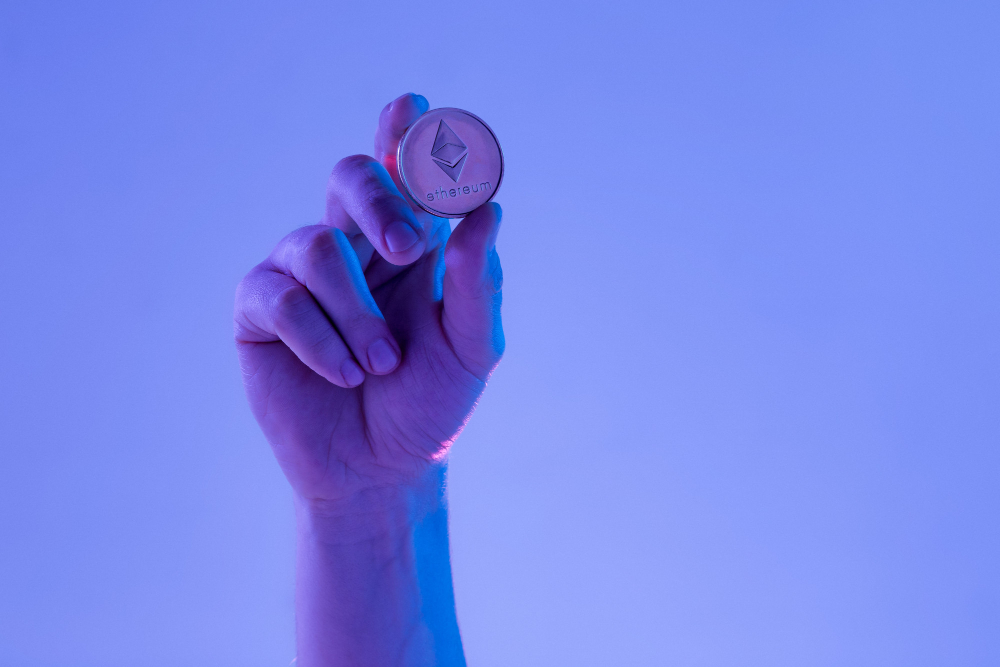Blockchain technology is not just about cryptocurrencies and tokens. It is the foundation of a new era of the internet, known as Web 3.0, that promises to transform various aspects of our society, such as finance, art, entertainment, and more. In this article, we will explore what Web 3.0 is, how nonfungible tokens (NFTs) and decentralized finance (DeFi) are its key applications, and what benefits and challenges they bring to businesses and consumers.

What is Blockchain Technology and Why Does It Matter?
Blockchain technology is a transparent ledger system that consists of a series of blocks containing verified transactions. Entries are immutable, meaning they cannot be erased or altered once placed on this distributed ledger. Blockchain technology enables peer-to-peer transactions without intermediaries, such as banks or governments, and ensures security, trust, and efficiency in the network.
Blockchain technology is the backbone of Web 3.0, which refers to the third evolution of web technologies and encompasses the decentralized applications that run on blockchain. Web 3.0 aims to create a more open, fair, and user-centric internet, where users have more control over their own data, identity, and digital assets.
How Web 3.0 is Creating a New Internet Based on Decentralization and Data Security
Web 3.0 is a radical departure from the current web paradigm, known as Web 2.0, which is dominated by centralized platforms, such as Google, Facebook, or Amazon. These platforms collect massive amounts of user data and monetize them through advertising or selling them to third parties. They also have the power to censor, manipulate, or restrict user access to their services.
Web 3.0 challenges this model by offering decentralization, data security, and online freedom. Decentralization means that no single entity or authority can control or influence the network or its content. Data security means that users can encrypt and store their own data on decentralized storage systems, such as IPFS or Filecoin, and grant or revoke access to others as they wish. Online freedom means that users can access any content or service without censorship or discrimination.
One of the main drivers of Web 3.0 adoption is the tokenization of value elements. Tokenization is the process of converting the assets and rights to a property into a digital representation, or token, on a blockchain network. Tokens can represent anything from cryptocurrencies to digital art to personal records. Tokens enable users to own, trade, and exchange their digital assets in a transparent and secure way.
How NFTs are Revolutionizing the Digital Art and Entertainment Industry
One of the most popular and innovative applications of tokenization is nonfungible tokens (NFTs). NFTs are unique digital assets that represent ownership of something, such as art, music, games, or collectibles. They are created and traded on blockchain platforms, such as Ethereum or Binance Smart Chain.
NFTs have exploded in popularity since 2021, with some selling for millions of dollars. NFTs have many advantages over traditional digital assets: they are scarce, verifiable, indivisible, and interoperable. Scarcity means that there is only one copy of each NFT or a limited number of copies in some cases. Verifiability means that anyone can check the authenticity and provenance of an NFT on the blockchain. Indivisibility means that an NFT cannot be split into smaller units or fractions. Interoperability means that an NFT can be used across different platforms or environments.
NFTs are empowering artists and creators to monetize their work directly from their fans and collectors without intermediaries. They also enable new forms of expression and creativity, such as generative art or interactive art. NFTs are not limited to art; they can also be used for gaming, sports, music, education, identity, and more.
How DeFi is Disrupting the Traditional Financial System and Offering More Opportunities
Another major application of Web 3.0 is decentralized finance (DeFi). DeFi refers to various financial applications that run on blockchain networks, such as lending, borrowing, trading, investing, or saving. DeFi aims to provide more accessible, transparent, and efficient alternatives to traditional financial services.
Currently, DeFi has grown rapidly, reaching over $100 billion in total value locked. DeFi has many benefits over conventional finance: it is permissionless, open, global, and inclusive. Permissionless means that anyone can access DeFi services without intermediaries or gatekeepers. Open means that anyone can create or participate in DeFi protocols without restrictions or regulations. Global means that anyone can access DeFi services from anywhere in the world without borders or barriers. Inclusive means that anyone can access DeFi services regardless of their income, credit, or identity.
DeFi also offers more opportunities for innovation and experimentation, such as yield farming, liquidity mining, flash loans, or synthetic assets. DeFi enables users to earn passive income, optimize their returns, leverage their assets, or hedge their risks.
What are the Benefits and Challenges of Blockchain Technology for Businesses and Consumers?
Blockchain technology, Web 3.0, NFTs, and DeFi have the potential to transform various industries and sectors, such as media, entertainment, education, healthcare, supply chain, real estate, and more. They offer many benefits for businesses and consumers, such as:
Increased efficiency and reduced costs: Blockchain technology eliminates the need for intermediaries and middlemen, which reduces transaction fees and processing time. It also automates and streamlines various processes and operations, such as verification, validation, or settlement.
Enhanced security and privacy: Blockchain technology ensures that data and transactions are encrypted and tamper-proof, which prevents fraud, hacking, or corruption. It also gives users more control over their own data and identity, which protects them from data breaches or misuse.
Improved trust and transparency: Blockchain technology provides a single source of truth that is visible and verifiable by all parties involved. It also creates a more fair and democratic system that is governed by consensus and incentives rather than by centralized authorities or institutions.
However, blockchain technology also faces some challenges and limitations that needs addressing and overcome, such as:
Scalability and performance: Blockchain technology has limited capacity and speed to handle large volumes of transactions or data. It also consumes a lot of energy and resources to maintain its security and consensus. There are various solutions under development to improve the scalability and performance of blockchain networks, such as layer 2 solutions, sharding, or proof-of-stake.
Usability and adoption: Blockchain technology is still complex and difficult to use for many users who are not familiar with its concepts and terminology. It also faces regulatory uncertainty and resistance from some governments or institutions who may perceive it as a threat or a challenge. There are various efforts being made to improve the usability and adoption of blockchain technology, such as user-friendly interfaces, education campaigns, and legal frameworks.
How to Get Started with Blockchain Technology and Join the Revolution
If you want to learn more about blockchain technology and its applications, such as Web 3.0, NFTs, or DeFi, there are many resources and platforms available online. You can start by:
Reading articles, blogs, books, or podcasts that explain the basics and trends of blockchain technology.
Joining online communities, forums, or social media platforms that discuss and share information about blockchain technology.
Exploring different blockchain platforms, such as Ethereum or Binance Smart Chain, that offer various tools and services for creating or using decentralized applications.
Get a crypto wallet, such as MetaMask or Trust Wallet, that allows you to store and manage your digital assets on the blockchain.
Buying some cryptocurrencies or tokens on an exchange platform, such as Coinbase or Binance, allows you to trade and exchange your digital assets on the blockchain.
Experiment with different decentralized applications (DApps), such as OpenSea or Uniswap, that allow you to create, buy, sell, or swap NFTs or DeFi products on the blockchain.
Parting shot
Blockchain technology is changing the world in many ways. It is creating a new internet that is more open, fair, and user-centric. Meanwhile, it enables new forms of value creation, exchange, and ownership. It is also offering new opportunities for innovation, growth, and inclusion. It is up to you to join the revolution and shape the future.
Personal Note From MEXC Team
Check out our MEXC trading page and find out what we have to offer! There are also a ton of interesting articles to get you up to speed with the crypto world. Lastly, join our MEXC Creators project and share your opinion about everything crypto! Happy trading! Learn about interoperability now!
Join MEXC and Start Trading Today!



